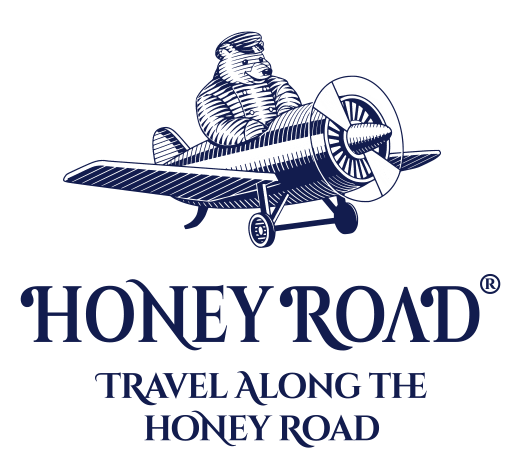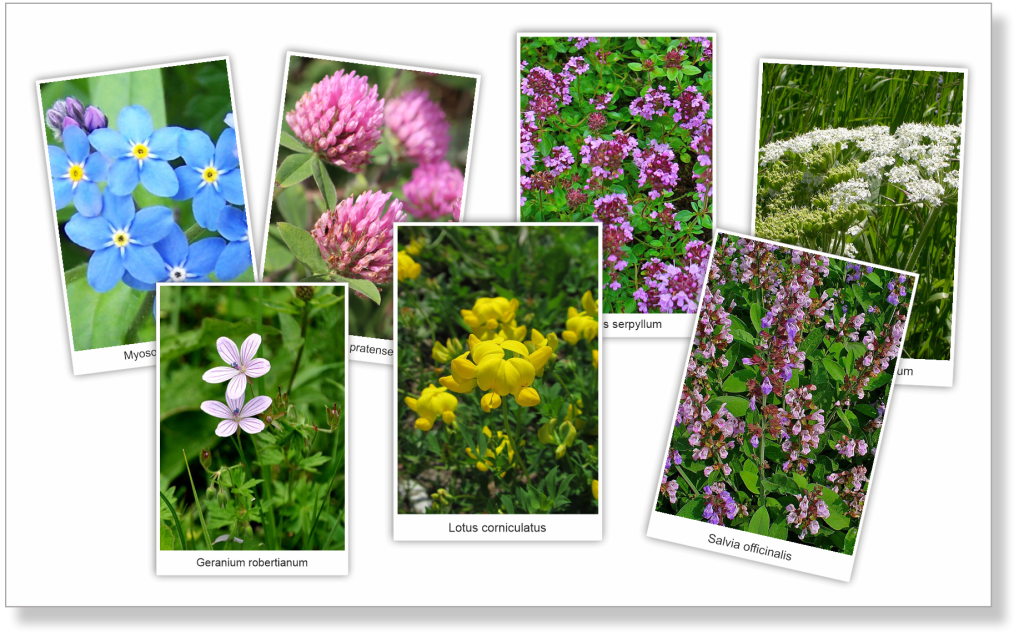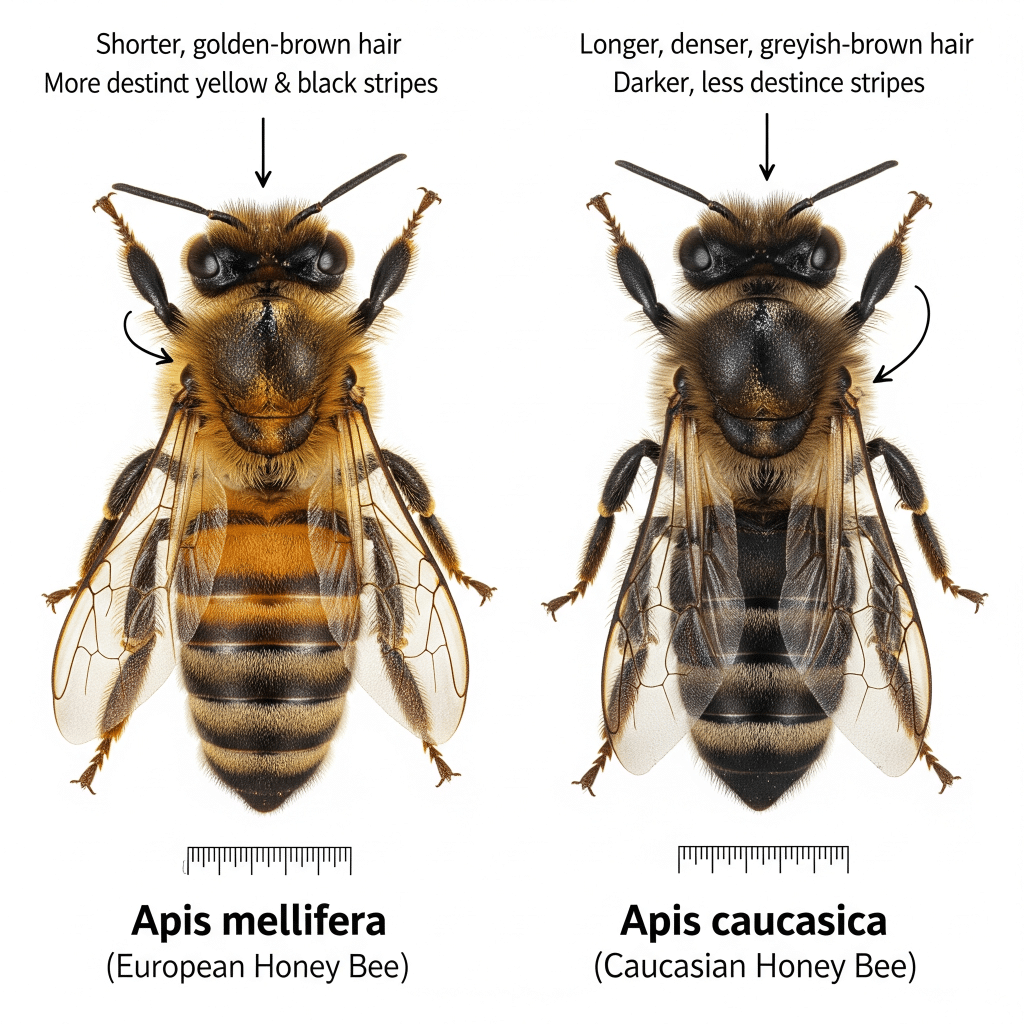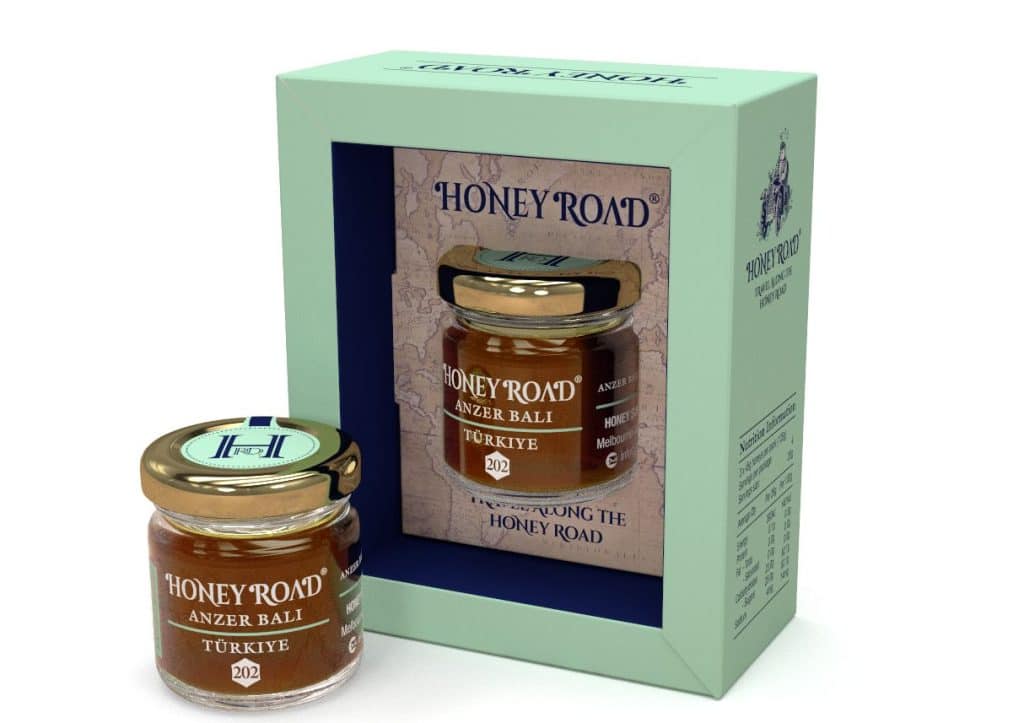Anzer honey - One of Turkey's most famous honeys
The article highlights Anzer Honey as one of Turkey’s most renowned and exclusive polyfloral honeys — sourced from the high-altitude Anzer Plateau (1,750–3,150 m) in Rize Province. Known for its unique floral fingerprint, including the essential Myosotis (Forget-me-not) pollen, this rare honey is strictly certified by institutions like Hacettepe University (HARÜM) and sold with a Geographical Indication label to guarantee authenticity. Studies show that Anzer Honey possesses strong antioxidant potential and even outperformed Manuka honey in lab tests for wound healing properties, making it highly valued as a bioactive functional food.

Table of Content
Anzer Honey—one of Turkey's famous honeys
- What is Anzer honey and what does it mean?
- What’s so special about the Anzer Plateau?
- How can we differentiate regular polyfloral honey from Anzer polyfloral honey?
- How is Anzer honey?
- Physicochemical Characteristics of Anzer Honey
- Why is Anzer honey considered of higher quality when compared to other honeys?
- Does Anzer Honey have any health benefits?
- Anzer honey vs Turkish chestnut honey vs Manuka honey
- What type of honey bee produces Anzer honey?
- Is the bee Apis caucasica different from the European bee Apis Mellifera?
- How is Anzer honey harvested and certified?
- Where can we find Anzer honey?
- What is the cultural significance of Anzer honey?
- Can we use Anzer honey in the kitchen?
What is Anzer honey and what does it mean?
Usually a type of honey is named after its botanical origin. There is monofloral honey and polyfloral honey, and we always know the type because we recognize the name. There is thyme honey, manuka honey, clove honey and so on.
Anzer is neither a plant nor a tree. It’s a place.
Anzer honey is a polyfloral type of honey harvested from the Anzer Plateau, Turkey.

The Anzer Plateau lies in Rize Province, on the northern edge of Turkey, where the land meets the Black Sea. This region is famous for its tea gardens climbing steep green hills. It sits close to the Georgian border (remember Georgia’s traditional Jara honey?).
If you travel about 30 kilometers inland from the city of Rize, winding through narrow valleys, you enter the district of İkizdere. To the south, the road climbs high into the Kaçkar Mountains, reaching elevations between 2,000 and 3,000 meters.
Here you find the Anzer Plateau (Anzer Yaylası), a U-shaped alpine valley ~13 km long, 4–9.5 km wide, ranging from 1,750 m up to 3,150 m. The valley is enclosed on E, W, S by ridgelines that exceed 3,000 m, creating a protected micro-environment with alpine meadows carpeted in hundreds of wildflowers.
What's so special about the Anzer Plateau?
Probably the multitude of flowers, especially the endemic ones – those that grow only here. It is a clean area, with unpolluted air and soil rich in minerals. There is no agriculture here, there is nothing industrial. Like Eden’s pristine garden, we could say.
Summers are short and cool, and winters are long, with abundant snow. (Did you know that in 2025 it snowed in July? As a result the honey production trippled!) Generally Rize’s climate is wet and cool, but up high it turns alpine, with short summers and frequent fog. A plant needs to be tough and resilient to survive here.
The Alpine ecosystem triggers a distinct nectar. The GI (geographical indication) spec calls Anzer Plateau an alpine flora valley and says this isolation leads to flora and climate different from neighboring areas. In addition, the change of this flora in biweekly periods is another factor that increases the quality of honey (Sorkun and İnceoğlu, 1984; Sorkun et al., 1989).
How can we differentiate regular polyfloral honey from Anzer polyfloral honey?
According to the Geographical Indication specification the pollen fingerprint makes the difference.
Certified Anzer honey must show dominant pollen families such as Asteraceae, Fabaceae, Lamiaceae, etc., a minor/rare presence of Myosotis (Boraginaceae), and not contain chestnut (Castanea sativa) or pontic rhododendron (Rhododendron ponticum) pollen. This is how labs verify authenticity.
Although there are more than 500 different flowers, and 80 species are endemic, bees have their preferences. According to different studies ((Sorkun and İnceoğlu, 1984; Sorkun et al., 1989; Sorkun and Doğan, 1995; Ulusoy, 2010; Hotaman, 2015), the plants that are most preferred by bees are Apiaceae, Asteraceae, Brassicaceae, Campanulaceae, Fabaceae, Lamiaceae, Liliaceae and Rosaceae.
And of course, we should not forget the forget-me-not flower!
A beautiful small flower that must be present in Anzer honey: Myosotis (aka Forget-me-not). The labs verify its presence and classifies it as minor (3–15%) or rare (<3%) pollen—an unusual “signature” for a floral honey. Myosotis is a defining fingerprint: if it’s missing, the honey may not be genuine Anzer.
Here are the most important flowers, whose nectar and pollen must be found in Anzer honey. (based on melissopalynological studies and GI certification):
- Thymus species (wild thyme)
- Campanula species (bellflowers)
- Trifolium species (clovers)
- Geranium species
- Lotus species (bird’s-foot trefoil)
- Salvia officinalis (common sage)
- Heracleum species (hogweed-related plants)
- Myosotis species (forget-me-nots) – these are present as minor (3–15 %) or rare (< 3 %) but essential markers of authenticity
- Lamium species (dead-nettles)
Read more about the flowers present on Anzer Plateau, and the ones that must be prezent in Anzer honey.

How is Anzer honey?
Color: from light yellow to dark brown, depending on the specific batch and floral makeup.
Aroma: mild, primarily floral, sometimes with soft herbal notes that reflect the alpine flora of the plateau.
Sweetness: high — as expected from a polyfloral honey — but with is a subtle complexity: delicate floral undertones, a slight herbal edge, and in some batches a faint hint of minerality.
Bitterness: minimal or absent, though some darker-brown samples show more robust flavor. (do you remember the bitterness of Strawberry tree honey?)
Texture: smooth Crystallization: slowly and coarsely.
Physicochemical Characteristics of Anzer Honey
After analyzing samples from Anzer honey, studies conducted by Hepsağ et al. (in 2019), revealed the most important characteristics of Anzer Honey:
- HMF (Hydroxymethylfurfural): ranged from 1.82 to 17.80 mg/kg (EU and Turkey both set a limit of 40 mg/kg, indicating freshness and minimal overheating.).
- Electrical Conductivity: within expected limits (diastase activity < 0.8 mS/cm), consistent with high-quality honey.
- Mineral Content: potassium, calcium, sodium, and magnesium.
- Total Phenolic Content (TPC): ranged from 802.6 to 1,352.6 μg GAE/g (i.e., 80–135 mg GAE/100g), indicating strong antioxidant potential. Among the major phenolic compounds identified: Pinocembrin, Hesperidin, Chrysin, Protocatechuic acid, p-Coumaric acid, Catechin, Caffeic acid phenyl ester (CAPE), p-OH benzoic acid and Caffeic acid.
There were also minor phenolics including: Myricetin, luteolin, rutin, resveratrol, epicatechin, t-cinnamic acid, ferulic acid and gallic acid. - Antioxidant Capacity (DPPH): ranged between 9.12 to 20.69 μmol Trolox equivalent/g — higher than other regional honeys, confirming robust free-radical scavenging activity.
- Moisture between 17.90 and 20.27%
- Proline between 808-1139 mg/kg (According to the Turkish Food Codex Honey Communiqué, the amount of proline in honey should be at least 300 mg/kg.) – this amount was revealed in a study by Hotaman (2015).
- pH, total acidity, sugar ratios, color – within standard ranges.
See Anzer honey’s characteristics compared to chestnut honey and polyfloral honey from Turkey.
Why is Anzer honey considered of higher quality, when compared to other honeys?
It is clear that its superior quality is not given by the sheer quantity of phenolics—but through a rich, diverse phenolic signature of key compounds (chrysin, pinocembrin, CAPE, etc.) combined with stable freshness markers (low HMF) and strong antioxidant activity.
These traits support its reputation as both a high-quality and a bioactive honey. Yeap, it’s the diversity of all its floral sources!
Does Anzer honey have any health benefits?
Honey producers and consumers state that Anzer honey is therapeutic for liver , stomach, and intestinal diseases, some skin conditions and many other diseases. Researchers all state that the healing property of this honey is related to the floral richness of the Anzer Plateau.
But beyond the folk claims, there are plenty of scientific studies that confirm its beneficial, therapeutic properties. Anzer honey is a functional food, accepted as such by specialized papers.
Anzer honey vs Turkish chestnut honey vs Manuka honey
Different studies compared Anzer honey’s characteristics with those of chestnut and manuka.
Turkish chestnut honey is stronger in general antioxidant capacity and phenolic concentration—but lacks Anzer’s lab-confirmed healing potency.
Manuka honey: leads in phenolic content and relies on unique MGO chemistry for its well-known therapeutic action (not captured by phenolic measurement alone).
Anzer honey was notable for its biochemical diversity and even though it has modest phenolic levels. As for its wound healing properties (using Scratch Assay), Anzer honey induced nearly complete cell proliferation, outperforming both chestnut and Manuka honeys (as shown by Ünlü et al., 2024).
What type of honey bee produces Anzer honey?
The Caucasian honey bee ( Apis mellifera caucasica), native to the Caucasus mountain region between the Black and Caspian Seas.
They are gentle insects that very rarely swarm, and are easier to work with. They are considered one of the gentlest honey bee subspecies and are less prone to stinging.
However, despite their resilience to cold, they overwinter poorly and build up slowly in spring. They are susceptible to Nosema disease and gum up their hives with propolis, sometimes overloading the hive with it.
Is the bee Apis caucasica different from the European bee Apis Mellifera?
Yes, Apis caucasica (Caucasian honey bee) is a subspecies of Apis mellifera, the European honey bee. Due to the different environmental habitat, they have developed different genetic, physical, and behavioral traits. Caucasian bee’s characteristics include gray color, gentle nature, long tongue, and adaptation to cool climates.
Native range
Apis Mellifera: Western and northern Europe
Apis Caucasica: Caucasus Mountains (Georgia, NE Turkey)
Body color
Apis Mellifera: Dark brown to black
Apis Caucasica: Dark (lead-like) gray, larger body
Proboscis length
Apis Mellifera: ~6.3 mm
Apis Caucasica: ~6.7–7.2 mm (longest among subspecies)
Foraging behavior
Apis Mellifera: Effective in temperate climates, less in cold/fog
Apis Caucasica: Excellent in cold, fog, and high-altitude areas
Nectar sources
Apis Mellifera: Prefers accessible flowers
Apis Caucasica: Can access deep corolla alpine flowers

Climate tolerance
Apis Mellifera: Moderate, sensitive to harsh winters
Apis Caucasica: High, adapted to humid mountain climates
Honey production
Apis Mellifera: Strong in warm, stable climates
Apis Caucasica: Consistent in short alpine flowering seasons
Temperament
Apis Mellifera: Often more defensive
Apis Caucasica: Gentle, calm, easier to handle
Swarming tendency
Apis Mellifera: Higher
Apis Caucasica: Lower, more stable colonies
Propolis production
Apis Mellifera: Moderate
Apis Caucasica: High (can reduce hive ventilation)
How is Anzer honey harvested and certified?
The production of Anzer honey follows a strict seasonal calendar, shaped by the high-altitude environment of the plateau and reinforced by official regulations.
Today, beekeepers mostly use modern hives with movable frames. This allows controlled harvests and proper sampling for laboratory analysis. Traditional log or wicker hives, still found in parts of Anatolia, are not practical here given the regulatory requirements.
read more
However, even with modern hives, the working style remains traditional: colonies are not fed with syrups or artificial supplements during the nectar flow; Anzer honey is not blended with other honeys; and there is a single harvest per year at the end of summer.
Beekeepers are allowed to move their hives onto the Anzer Plateau only between 20 May and 30 June. This rule ensures that the bees forage exclusively on the alpine flora of Anzer, without mixing nectar from lower altitudes.
The harvest does not happen on a fixed date each year. Instead, local authorities and experts inspect the plateau during July and decide when the honey is ready to be collected. The timing depends on several factors:
- the progress of flowering,
- prevailing weather conditions,
- pollen composition.
Typically, the harvest is authorized in the second half of July, but only after on-site evaluations.
Once harvested, the honey must undergo laboratory analysis before it can be sold under the Anzer name. Samples are tested at Hacettepe University’s Honey Research Center (HARÜM) and by official food control laboratories. The analysis checks for:
- pollen composition (the floral “fingerprint”),
- physicochemical parameters such as moisture, HMF, diastase activity, and sugar ratios.
- absence of unwanted pollen sources (chestnut, rhododendron).
Only the honey that passes these tests receives certification and is sold with a special geographical indication label. Each jar is numbered and traceable to guarantee authenticity.
Where can we find Anzer honey?
If you would like to taste this rare treasure, you can order authentic Anzer honey from HoneyRoadStore on Etsy. Harvested in small batches on the Anzer Plateau and supplied directly by local beekeepers, it offers a genuine way to experience the purity and tradition behind one of the world’s most exclusive honeys.

What is the cultural significance of Anzer honey?
In Turkey, Anzer honey is much more than a local specialty—it is regarded as a national treasure. For centuries, it has been valued not only for its unique taste and composition but also for the prestige associated with its origin.
Because production is extremely limited and strictly certified, owning or gifting a jar of Anzer honey carries a special meaning. It is often presented as a distinguished gift at official visits, ceremonies, and important family occasions. In this sense, Anzer honey functions almost like a cultural symbol of purity and authenticity.
read more
In local communities, Anzer honey represents pride and identity. Families in Ballıköy and Çiçekliköy see it as part of their heritage, passed down through generations. The name “Anzer” itself has become synonymous with excellence in honey, both within Turkey and abroad.
There is also a symbolic association between the plateau’s high altitude, its rare alpine flora, and the extraordinary value of the honey. Just as the flowers grow only in that isolated environment, the honey itself is seen as unrepeatable elsewhere—a gift from nature that cannot be reproduced by human effort.
Every summer, local communities in the İkizdere district celebrate the flowering season on the Anzer Plateau with small festivals that showcase traditional music, dance, and regional products. Visitors can taste local dishes, meet the beekeepers, and learn more about the history of Anzer honey while surrounded by the very flowers that make it unique.
Can we use Anzer honey in the kitchen?
Due to its intense aroma and herbal-floral complexity, Anzer honey is usually enjoyed in its purest form. In Turkey, it is traditionally eaten by the spoon or paired with a simple base such as fresh bread, clotted cream (kaymak), or soft cheeses.
Its strong notes also make it a refined partner for walnuts and hazelnuts, both abundant in the Black Sea region. Unlike more common table honeys,…
read more
Anzer is rarely used for cooking or baking; instead, it is reserved for moments when its character can stand out—such as drizzled over yogurt, added to herbal teas, or even combined with tahini for a luxurious breakfast spread.
In Turkey, honey is not only a sweetener but also a centerpiece of the breakfast table. A classic pairing is honey with tahini, creating a rich, nutty spread that has nourished Anatolian families for centuries.
Another beloved tradition is serving honey with kaymak, a thick clotted cream, often reserved for guests or special occasions. Anzer honey, with its rare alpine floral profile, elevates both rituals into something extraordinary.
Ready for a new adventure?
Join Barnaby in his journey to discover Ulmo Honey from Chile.
Hmm, is he taking the plane or the balloon?
Bibliography / References
- Coğrafi İşaret Platformu – Anzer Honey Geographical Indication Specification (Turkish Patent and Trademark Office).
- Hepsağ, F. et al. (2019). Physicochemical properties of Anzer honey. Uluslararası Arıcılık Araştırmaları Dergisi (Journal of International Apicultural Research). dergipark.org.tr
- Malkoç, M. et al. (2019). Phenolic composition and antioxidant properties of Anzer honey from Black Sea region of Turkey. ResearchGate
- Saral, Ö. et al. (2023). Comparison of chestnut and Anzer honey: phenolic content and antioxidant activity. PubMed
- Ünlü, M. et al. (2024). Comparative wound healing and antioxidant properties of chestnut, Anzer, and Manuka honeys. Turkish Journal of Agriculture – Food Science and Technology agrifoodscience.com
- Gastronomy GoTürkiye – 5 honey varieties from Türkiye. gastronomy.goturkiye.com
- Daily Sabah – What’s the buzz all about the honey varieties in Turkey? dailysabah.com
- com.tr – Official producers’ cooperative site for Anzer honey anzerbali.com.tr
- Beekeeping Resources – Races of Honey Bees https://bees.caes.uga.edu/
